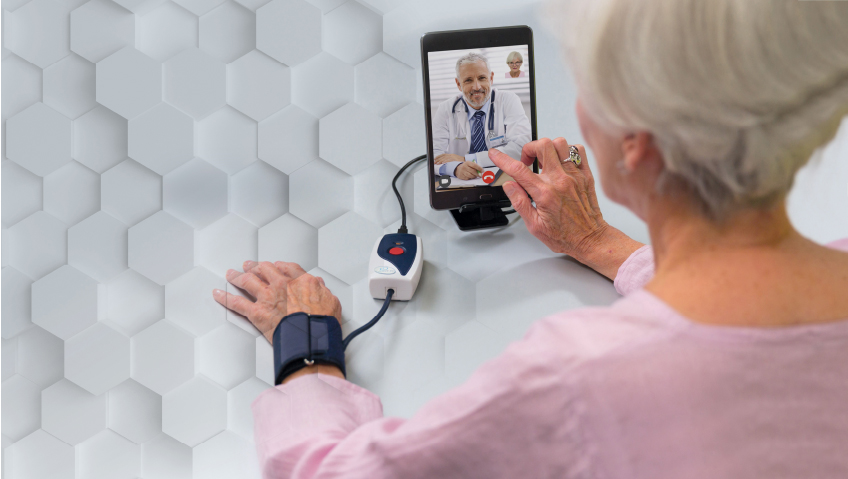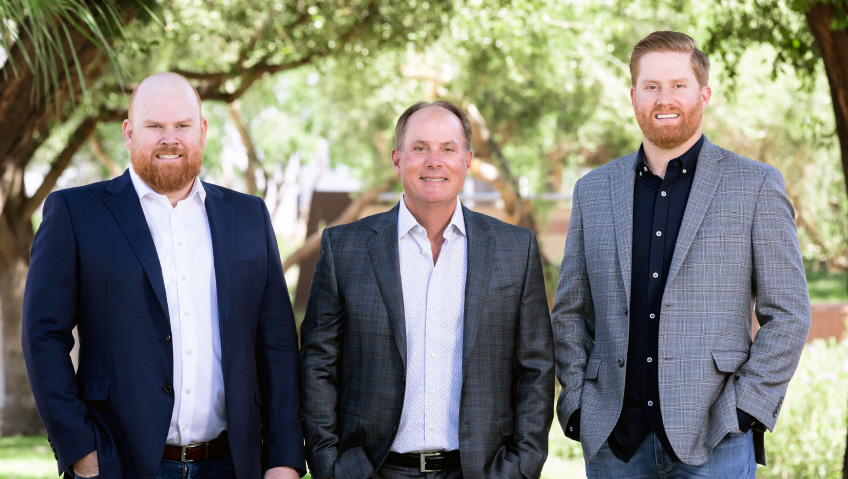How can we improve the quality of daily life, making it more enjoyable and more livable? Cortex Design Inc. focuses on commercializing technologies that enhance life and offer positive changes to the human experience.
Launched in 1999, this Toronto-based, award-winning, ISO 9001:2015 design company provides a variety of services that include project planning and regulatory strategy, concept development, functional prototype development, test validation, regulatory compliance oversight, and ongoing support for contract manufacturing.
As a product-development manufacturing and investment firm, Cortex looks for clients and partners who have identified a key novel technology with commercial potential.
“Our clients have generally identified a market and de-risked their technology to the point of a working proof of concept or bench-top prototype,” says Dylan Horvath, Founder, President and CEO. “Cortex steps into the picture to connect the dots between the humans who will use their product and the technology the client has identified. We carry that through manufacturing as well to ensure the promise of the experience we designed is delivered from end to end.”
The company also makes early investments in companies that have both strong teams and growth potential—companies whose products offer real opportunities to improve people’s lives.
“When we talk about the human experience, we’re looking for technologies whose value lies in the way people will use them,” says Horvath. “We don’t typically do unseen equipment or parts of machinery; we develop technologies that humans interact with, and add value by making those interactions seamless and delightful.”
Cortex’s major focus is on medical and life science-based products. With a huge push to democratize access to health care and level the playing field in terms of who has access to human-health products, there’s also a push to fix the delivery of healthcare, which right now is largely institutionalized.
“You have to go into a building, sit in the waiting room, and then your whole day is shot for about five minutes with a doctor. That’s an awful experience,” says Horvath. “Many of our products are remote diagnostics or patient care and monitoring systems that bring health care into the home,” he explains.
“It could be diagnostic systems that sit in your kitchen rather than in a doctor’s lab,” says Horvath. “The benefit to humans there is pretty clear: Keeping them comfortable, and aging at home. These products allow people to stay in their homes longer before moving in with relatives or a long-term care facility,” he explains.
“The data is clear; health outcomes and standard of living drop off dramatically when people are no longer able to function in their homes,” says Horvath. “The longer people can stay out of hospitals and institutions, the higher the quality of life they get to experience. We want to extend that as much as we can, and there are a lot of opportunities to do so.”
One such example in Cortex’s portfolio is the Karie medication dispensing system. This product was designed for Cortex client AceAge, a company that envisioned a dispenser simple enough for use at home, to increase medication adherence and data tracking. Cortex chose to invest, delivering a production-intent design with the ability to dispense pre-packaged medications directly to the user as per their doctor-prescribed and pharmacy-prepared medication regimen. Although originally intended for use in at-home clinical trials, it turned out to be suited to private use both in private homes and in long-term care facilities, increasing patient adherence to prescriptions and making caregivers’ lives easier.
“The use of technology to allow people to live independently for extended periods of time has been accelerating,” says Horvath. “While there’s been some scepticism or lack of acceptance in the past, COVID accelerated a lot of these trends by making it very clear that remote patient care and monitoring is a powerful way to scale health services while keeping patients safer,” he says.
“The standard of care for medication dispensing right now is that a nurse comes to individual homes and watches people take their medication, which is wildly inefficient. During COVID, it also leads to opportunities for transmission,” says Horvath. “Systems that can dispense medication in the home with a high degree of accuracy and a great user experience can reduce this risk, and lower the overall burden on the health care system.”
Cortex also joined a multidisciplinary team that includes Raytheon, Purdue University, PortaScience, and LaDuca LLC., for work on an innovative COVID-19 test for humans that stems from the work of Raytheon BBN Technologies researchers to identify respiratory sickness in cattle.
Their lateral flow molecular assay-based LAMP test for POC COVID-19 detects the presence of SARS-CoV-2 RNA in saliva or nasal swab specimens. This technique offers the high accuracy of PCR tests, combined with the low cost of antigen tests, all without the need for an intrusive nasopharyngeal swab.
C-FAST is the result: A passive microfluidic cartridge with a simple clinical process that gives reliable test results from a saliva sample in less than an hour, without need of a lab. Cortex brought its microfluidics expertise and user experience design chops to the project, which has the potential to increase testing accessibility in an era where diagnostic resources are stretched to the limit.
COVID, of course, has wreaked havoc around the world by seriously disrupting supply chains and creating manufacturing issues, forcing companies to rethink how they’ll do business, both now and in the future.
“Offshore manufacturing isn’t going away anytime soon and it’s silly to think that it might,” says Horvath. “That being said, what’s globally obvious is that relying on a foreign supply chain is very dangerous when fuel costs are rising, when demand is increasing, and when delivery is threatened by health risks to people who have to work in factories and shipyards.”
It’s important to understand this and be flexible with supply chains right now, he adds, because what’s working today may not work tomorrow. “It’s good to have a couple of options. Just like diversifying your portfolio is a good idea, diversifying your supply chain is too. Having both onshore and offshore options is important.”
Where that gets most difficult, he says, is with tool parts, injection molding, die casting, and with extrusion, to a certain extent. Traditionally tooling has been more expensive to do onshore, sometimes five to ten times more.
“Certainly, for pilot runs and shorter runs where there still may be tooling changes after the first tool is released, it’s very difficult not to do that offshore, In those cases, having a really strong offshore relationship is important,” says Horvath.
“Relationships are everything when it comes to offshore manufacturing,” he says. “It’s very difficult to motivate contract manufacturers with a purchase order; it’s much easier to motivate someone who you’ve already been in the trenches with. When you need something to be manufactured, you can’t ignore the relationships and the strength of those relationships. It’s relationships and flexibility that we’re focused on.”
In Q1 2022, Cortex will conform to ISO 13485, a quality standard for medical device manufacturing that will allow the company to further enhance its ability to design and produce medical products for clients under FDA and Health Canada certification.
“In order for a medical product to come to market, there has to be someone in the chain certified with ISO 13485,” says Horvath. “We design and document everything under our Quality Management System (QMS), or our clients’. But if they don’t have one, we can support them by building their own QMS. We can run it, populate it, and transition it over to them.”
This is a differentiator for the Cortex team: they work to build and launch their clients’ products, but are increasingly focused on equipping their partners to run projects themselves.
“I think the real differentiator for us is how we use design to guide decisions from the top. It’s difficult for design firms to be human centered and also do the manufacturing, because sometimes those things are at odds with each other.”
When he founded the company, Horvath coined the name “Cortex” around the image of both sides of the brain, to reflect a focus on two key competencies: human factors and technical excellence. Today, the company’s goal is to use design thinking to put the user first, from the beginning of the client’s engagement all the way through to manufacturing.
“We’ve designed an integrated system of service delivery that puts that front and center,” he says. “Human experience is great, but it can’t come at any cost. So at the beginning of the process, we understand what the client’s constraints are. We plan out and risk-mitigate the form of engagement that’s going to be most commercially successful for a client, while keeping human factors as a North Star for the types of products we want to introduce,” says Horvath.
“We believe that ultimately what makes you successful is market acceptance, and market acceptance is about considering the human at every stage of design, engineering, manufacturing, and commercialization.”
The technology can be great, and can address the market and be priced right, but ultimately if the person receiving that care or using the device doesn’t like it, all the work upfront is for naught, he adds.
Cortex’s future includes increasing capacity to manufacture onshore and in-house, and not just rely on external partners, while continuing its human-centered approach – from the assemblers to the designers to the engineers.
“We’re really a team of interpreters,” Horvath says. “We need to know both sides of the coin. We need to use ethnography and research to develop a deep understanding of the user’s needs, and we also need to understand the technology that our clients have deployed. Our value lies in bridging that gap.”






